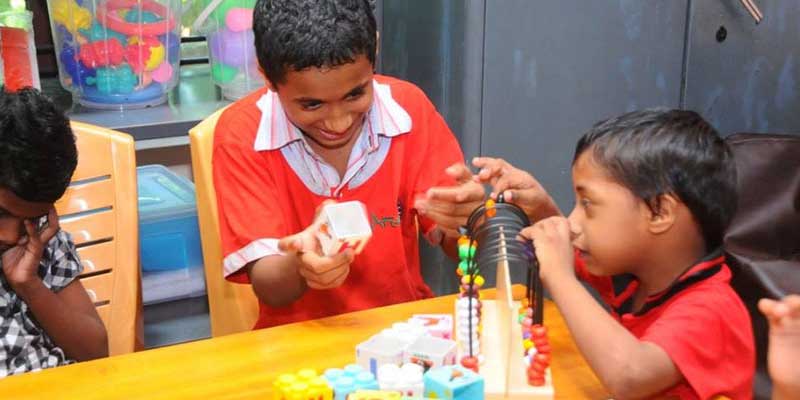Children with ASD need structure and routine.
Structure and routine to a child with Autism is like glasses for a child who has a visual impairment or a hearing aid for a child with a hearing impairment. Structured learning is that important. The more organized and structured the environment and consistent the teaching style, the better.
Structure “time” for the child with Autism.
A daily schedule is one tool for structuring “time” for the child with ASD. You may have your daily schedule posted on the board. But typically this is just not enough for the child with Autism. Most children will require a personal interactive daily schedule which is often more detailed. Mini-schedules for specific time periods are often needed.
Structure “space” for the child with ASD.
Children with ASD benefit from clearly defined boundaries for specific areas of the classroom. Use of furniture to be fine areas or tape on the floor is often helpful. The student’s work area should also be organized. Having a folder for work ‘to do’ and ‘done’ be useful.
Prepare the child with Autism for change in the routine.
Despite the most routine based classroom, there will always be changes in the schedule. Think of the all the events that may occur that impact the routine of your classroom. Assemblies and fire alarms are typical events that impact the routine of the classroom and often cause distress for the student with autism. The use of the daily schedule or a tool such as a social story may be helpful.
Children with ASD have significant Difficulty processing oral language.
Language deficits are the all mark of autism. Children with Autism have difficulty processing long strings of verbal input. Provide one to two directions at a time and keep it simple. Directions such as, ‘get your math book out of your desk , turn to page 59, complete the first 10 problems , be sure to put your name on your paper and then put it in the basket’, would be very difficult for the child with ASD of course. The amount of information that can be processed is different from child to child, but be aware that processing oral language is always an area of deficit.
Children with Autism are visual processors.
Although the language areas of the brain are affected, the visual areas are often normal or, in many cases, well developed. Children with ASD process information visually significantly better than oral language. When at all possible, content information should be accompanied by visual representations. Pictures! Pictures! Pictures!
Children with ASD have a difficult time understanding non-verbal communication.
You know your disapproving “teacher look” when the class is too loud? Well, your student with ASD will likely not understand that your look means that you want your class to quiet down. While the rest of your student quickly realize to they are to stop talking, the child with ASD will continue to chat and then be perplexed as to why he’s now in trouble. You will need to be direct in your language and tell the child exactly what you want him to do (“Bill, stop talking”).

